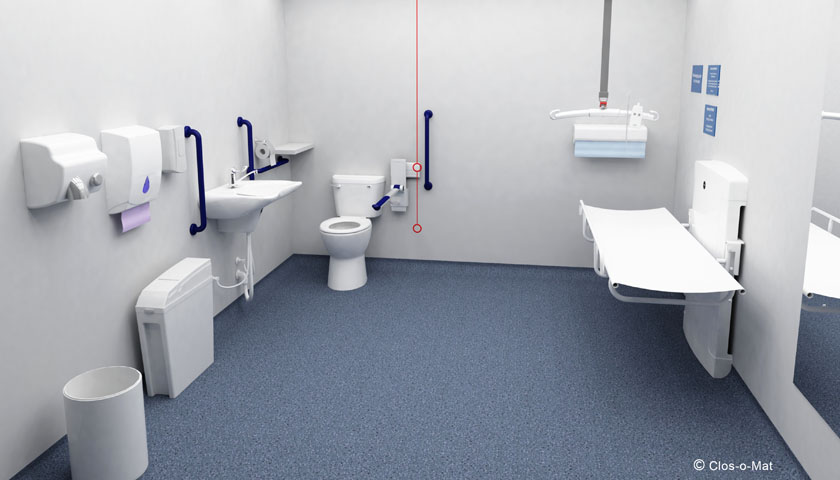An architect is urging her colleagues to start with what suits most and work backwards, when it comes to accessible toilet specification.
Inclusive specialist architect, blogger and mother of a child with special needs, Vaila Morrison maintains that current Building Regulations fail to address what meets the needs of everyone. A more ‘universal’ approach to a Document M-compliant wheelchair-accessible WC would enable tens of thousands more people to access a venue.
She says, “Under current Building Regulations, at the very least a unisex wheelchair-accessible WC should be provided, if there are no other toilet facilities. However, Document M assumes the wheelchair-user can access the facility and transfer without help.
“In reality, thousands of people need help to transfer because of their disability and/or size; they need space for their large wheelchair and/or carer(s), and perhaps a hoist. Even I should use a hoist to transfer my daughter from her wheelchair- she’s six years old, so is now really too big for me to lift unaided. School staff or paid carers must use a hoist to lift her for Health & Safety and insurance reasons.
“Similarly, thousands of people with ‘invisible’ disabilities and/or learning disabilitiues need the extra space, and a changing bench to be changed because of incontinence, or to deal with stoma. Surely it’s better to start with one facility that in principle meets the needs of most, and work back? After all, if it’s the only loo, if it’s unisex and accessible, then it should be accessible for all able and disabled people, babies, children and families alike! All it would need, would be for the regular ‘Doc M’ toilet to be enlarged enough to accommodate an adult-sized changing bench and a ceiling hoist.
“Clos-o-Mat has developed a version of the concept, with campaigners. Space to Change requires only 7.5m2. Then, if you need extra capacity and have the space and budget, you can add the ‘extras’- the separate ladies, gents, baby-change and even a BS8300: 2009 standard Changing Places toilet (12m2 assisted accessible WC with height-adjustable changing bench and ceiling track hoist)!”
Under latest Building Regulations and good practice guidelines, a Changing Places toilet is ‘desirable’ in buildings to which numbers of the public have access. Since their introduction a decade ago, over 900 have been opened across the UK. Space To Change toilets plug the gap between conventional (Building Regulations Approved Document M 2013) wheelchair-accessible toilets, and the ‘desirable’, additional, larger and better equipped Changing Places toilets, being an enlarged wheelchair-accessible toilet that further includes an adult-sized changing bench and a hoist.
Clos-o-Mat, Britain’s leader in supporting delivery of dignified, independent toileting at home and away, is unique in its ability to deliver both Changing Places and Space to Change facilities. It was the original sponsor of the Changing Places campaign, and has helped campaigners develop the Space to Change concept.
Clos-o-Mat can provide, in-house, the design advice, supply, installation, commissioning, project management and maintenance across the ambit of accessible toileting equipment.


